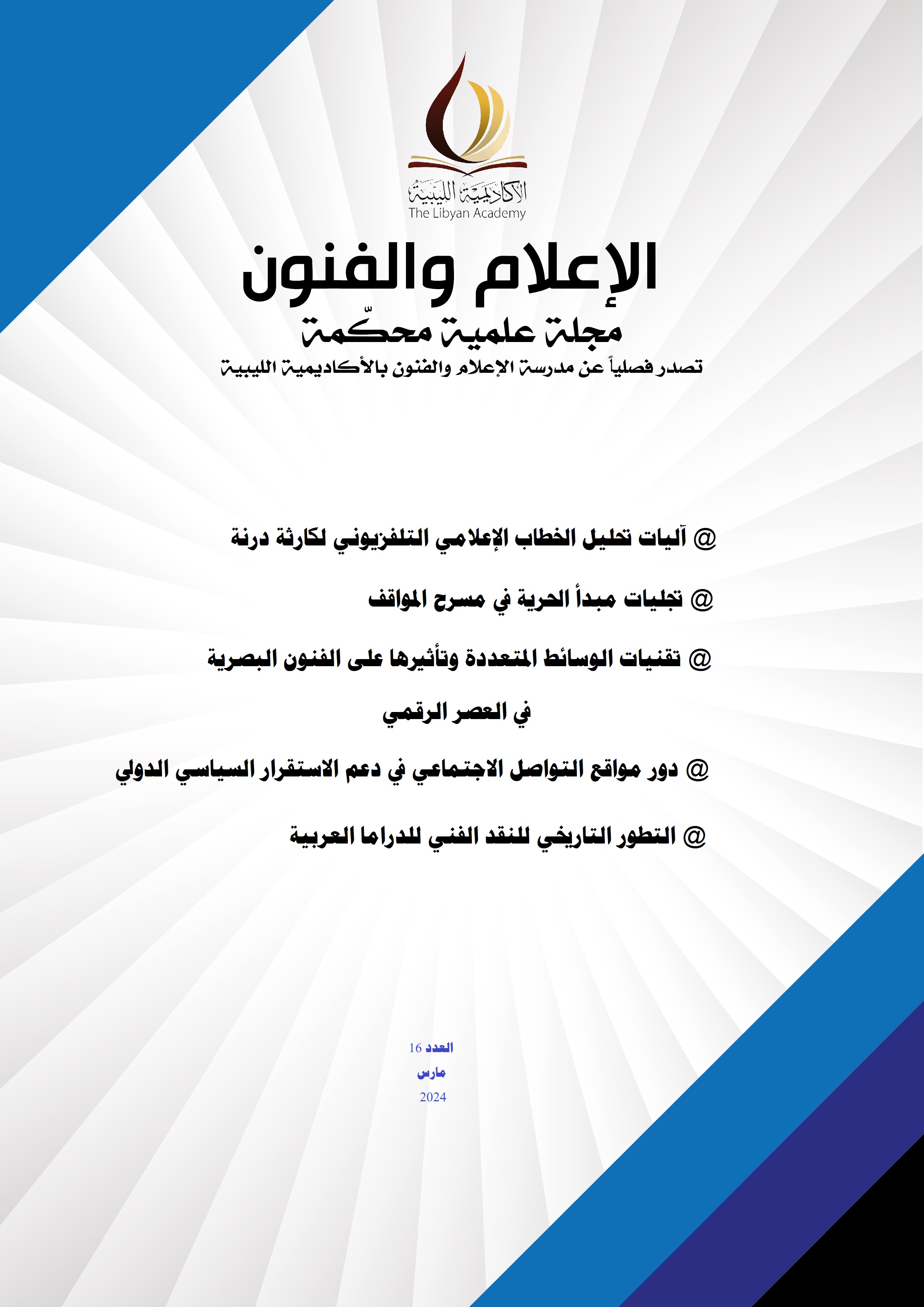آليات تحليل الخطاب الإعلامي التلفزيوني لكارثة درنة
Main Article Content
Abstract
Abstract:
The research aimed to monitor the context of constructing the media discourse and the language used by the heads of the House of Representatives and the Government of National Unity in communicating with the Libyan and international community regarding the events of the Derna disaster. The research problem was based on documenting the pronunciation, coding, and connotations of the hidden meaning through analyzing a sample of their visual speeches in the Libyan city of Derna disaster.
In this research, the researcher used the critical analytical method “qualitative analysis” that relied on intentional sampling, by deliberately choosing two examples of speech, the first for the heads of the House of Representatives and the Government of National Unity immediately following the Derna disaster in the period from September 12, 2023 to September 14. 2023, as a type of qualitative analysis away from quantitative indicators based on the active forces in the discourse and paths of evidence to diagnose and understand the characteristics of elite discourse structures.
The research showed a number of results that centered on the use of the two rhetoricians who were the sample of the research in the Derna disaster in a negative way, using sentences and meanings that deepened resentment and aroused the ire of local public opinion, and the control of the speech in presenting arguments, promises, and rhetorical means with the aim of convincing those affected by the Derna disaster in a way that influenced the recipients’ knowledge and positions, and relying on The fictional narrative is to deepen inevitable assumptions, to direct public opinion about the failure of the House of Representatives and successive governments in managing the country’s affairs.
Keywords: mechanisms of media discourse, Derna disaster

